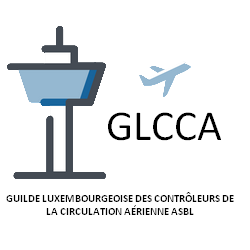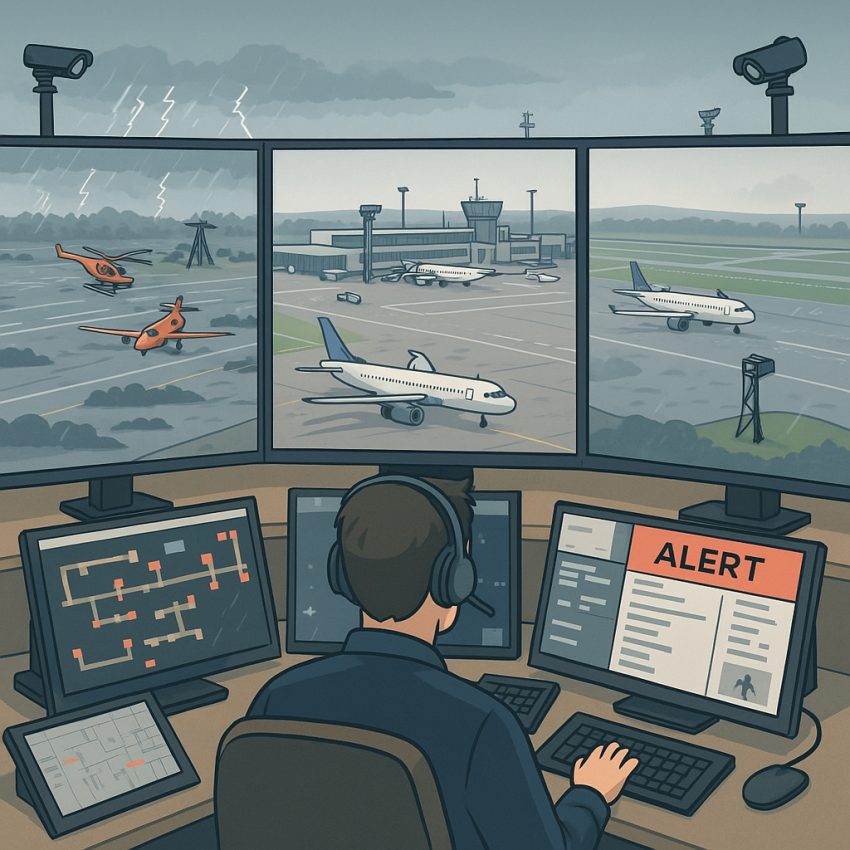In recent years, remote (virtual) tower technology has received increasing attention as a potential solution for air traffic control. While this technology could offer certain cost benefits and operational flexibility, its suitability for complex airports with mixed traffic, high movement volumes, and complex layouts remains highly questionable.
This feasibility assessment analyzes the safety risks, operational limitations, technical vulnerabilities, maintenance challenges, and economic concerns associated with implementing remote towers at airports that handle a broad mix of IFR and VFR traffic, military operations, helicopters, frequent runway crossings, towing operations, and long runways (3,000 meters and above).
While some airports have deployed remote towers, such as London City Airport (LCY), these typically operate in highly simplified environments with very different operational profiles. London City, for example, handles only around 45,000 annual movements, has a simple runway layout, no VFR traffic, and limited aircraft diversity.
By contrast, many complex airports with 100,000 or more movements annually face far greater demands that challenge the current capabilities of remote tower systems.
Remote Tower Safety Risks and Disadvantages
1. Compromised Situational Awareness and Responsiveness
Virtual towers rely exclusively on camera feeds, lacking direct visual and auditory cues such as engine sounds, wind shifts, or ambient activity that controllers depend on for real-time decision making. Even with low-latency systems, delays ranging from milliseconds to over a second can impair a controller’s ability to react promptly to dynamic situations, runway incursions, or emergencies, significantly increasing collision risks during busy operations.
2. System Vulnerabilities
Failures in cameras, networks, or power supplies may result in frozen or blank screens, immediately degrading situational awareness and potentially halting operations without effective fallbacks. Unlike conventional towers, where visual contact with the aerodrome remains intact even during system failures, remote towers depend entirely on the continuous availability of technology.
3. Cybersecurity Threats
Remote towers depend heavily on data networks, making them vulnerable to cyberattacks, such as data manipulation, denial-of-service, or system infiltration. A successful attack could mislead controllers, compromise safety-critical information, or even disrupt national and military operations at airports that share civilian and defense responsibilities.
4. Susceptibility to Simple Disruptions
Even relatively simple, low-tech attacks, such as aiming a handheld laser pointer at exposed cameras mounted on tall masts, can temporarily blind or degrade image feeds, rendering controllers unable to maintain safe oversight during critical phases of operation.
5. Weather-Related Limitations
Adverse weather conditions (heavy rain, snow, glare, sudden storms, fog, or lightning) directly affect camera performance, sometimes disabling entire feeds. Unlike conventional towers, where controllers maintain full visibility even during most adverse weather, remote towers are much more sensitive to environmental conditions.
6. Inadequate Detection of Hazards
Remote towers may fail to detect small foreign objects, wildlife (such as migratory birds), or ground incidents beyond camera coverage. Blind spots and resolution limitations delay the identification of hazards that can pose immediate safety risks on runways and taxiways.
7. Controller Fatigue
Continuous screen use, system lag, and the need to manage multiple camera angles increase cognitive strain on controllers, raising the likelihood of fatigue-induced errors, particularly in complex, mixed-traffic environments.
8. Over-Reliance on Advanced Systems
Dependence on advanced tracking technologies (radar overlays, visual tracking, and automated alerts) may leave controllers unprepared when these systems experience failures. Without sufficient manual fallback capabilities, safety margins may be significantly reduced during technical disruptions.
Operational Limitations of Remote Towers at Complex Airports
1. Unsuitability for Mixed, High-Volume Traffic
Remote towers were initially designed for low-density, rural, or single-traffic-type airports. Airports handling 100,000 or more annual movements with complex operations, including simultaneous IFR/VFR traffic, helicopter operations, military flights, flight training, and emergency services, present challenges that current remote tower systems struggle to address safely.
2. Complex Runway Crossing and Ground Movements
Airports with frequent runway crossings for towings, vehicles, or helicopters require real-time, wide-angle situational awareness that current camera systems may not reliably provide, particularly when managing multiple simultaneous ground operations.
3. Difficulties Managing Diverse Aircraft Types
Operations involving a wide range of aircraft, from light trainers to large commercial jets and military aircraft, require visual flexibility that virtual towers may not deliver effectively, particularly for unpredictable or non-standard flight profiles.
4. Reduced Traffic Throughput
Limited ability to maintain safe visual separation may necessitate greater spacing between aircraft, leading to lower traffic capacity, reduced efficiency, and operational delays, especially during peak periods.
5. Real-Time Decision Making Under Pressure
Emergencies, diversions, and non-standard flights require fast, real-time visual judgment that may be compromised by video latency, limited camera perspectives, or system reliability issues inherent in remote tower configurations.
6. Helicopter and VFR Operations Challenges
Helicopter operations, particularly VFR arrivals and landings on taxiways or adjacent non-standard landing areas, demand dynamic visual observation and quick adjustments that are difficult to achieve through limited or delayed video feeds.
7. Limited Validation for Complex Scenarios
Most validation trials of remote towers (e.g. SESAR) have focused on simple, low-traffic airports. There remains a lack of robust operational evidence demonstrating safe deployment for complex airports handling mixed traffic, high volumes, and diverse flight operations.
8. Limitations in Low Visibility and Instrument Operations
Remote towers face significant challenges when handling low visibility procedures (LVP) and advanced instrument operations such as CAT II/III approaches. Even at relatively simple remote tower airports like London City (LCY), these limitations are clearly visible:
- No CAT II/III Operations: London City is only certified for Category I approaches. Precision landings under CAT II/III conditions are not supported.
- Low Visibility Procedures (LVP): The airport closes when visibility drops below 1,500 meters.
9. Restricted Traffic Complexity: The London City Case
Even at one of the world’s most high-profile remote tower deployments, London City Airport (LCY), the operational profile is carefully limited to ensure feasibility:
- No VFR flights: VFR recreational, training flights and circuits are not permitted at any time.
- Limited traffic diversity: Primarily scheduled commercial traffic with no heavy aircraft or widebody operations.
- Departure separation: A standard 2-minute separation is applied between all departures.
These strict limitations are possible only because LCY’s layout, traffic mix, and physical environment are highly controlled, conditions that do not exist at most larger airports with mixed IFR/VFR operations, flight training, helicopters, military flights, runway crossings, and over 100,000 annual movements.
Technical and Maintenance Challenges
1. Increased Technical Support Requirements
Remote towers require constant operation of highly complex IT infrastructure, including real-time video networks, cybersecurity defenses, data storage, and specialized surveillance systems. This demands 24/7 support by specialized staff across multiple technical domains, increasing operational complexity and cost.
2. Shortage of Qualified Personnel
Air navigation service providers worldwide face ongoing shortages of qualified IT and cybersecurity professionals capable of maintaining these advanced systems reliably over time, further complicating safe remote tower operations.
3. Continuous Equipment Maintenance
Camera systems require ongoing cleaning, recalibration, and replacement to mitigate environmental degradation (e.g. dirt, precipitation, bird droppings, insects), introducing new logistical and operational challenges.
4. Power Supply Vulnerabilities
Remote towers depend heavily on reliable primary and secondary power sources, requiring costly, fully redundant infrastructure to avoid service interruptions during adverse conditions.
5. Complex System Architectures
Highly integrated visual surveillance and data systems introduce multiple single points of failure unless robust redundancy and failover mechanisms are implemented, increasing both system cost and maintenance demands.
6. Camera Placement and Compliance Constraints
Camera installations must meet strict regulatory standards for frangibility and safety within runway safety areas. Examples such as the delayed implementation of 46-meter camera masts at Liège Airport illustrate these infrastructure complexities.
Economic and Strategic Considerations
1. High Initial and Ongoing Costs
High-resolution cameras, low-latency networks, workstations, cybersecurity protections, maintenance, training, and continuous software upgrades combine to create capital and operational expenditures that frequently rival or exceed conventional tower costs.
2. Vendor Lock-In and Supplier Risks
Dependence on a single vendor or proprietary system risks cost escalations or obsolescence if the supplier exits the market or ceases operations.
3. Delays in Virtual Center Implementations
Large-scale virtual center projects, such as Skyguide’s delayed Virtual Center in Switzerland (postponed to 2031 with costs exceeding €305 million), highlight the financial and technical challenges of implementing complex air traffic management systems, even though these are not directly related to virtual tower operations.
4. Increased Training Costs
Air traffic controllers require additional training for remote tower systems, including advanced failure protocol management, resulting in longer, more expensive qualification pathways than conventional tower training.
5. Reduced Efficiency and Airport Capacity
Visual separation constraints inherent in remote towers may slow traffic throughput, reduce airport capacity, and negatively affect revenue potential — directly undermining the technology’s promised cost-saving benefits.
6. Regulatory and Certification Hurdles
In the United States, the FAA has faced multiple delays and vendor withdrawals from remote tower certification programs, highlighting how the technical and regulatory challenges remain unresolved even in leading aviation markets.
Conclusion: Remote Towers Not Suitable for Complex Airports
While remote tower technology may offer benefits for small rural airfields or contingency use, its application for complex airports with high movement volumes, diverse traffic types, and demanding operational profiles remains unsafe and impractical under current technological capabilities.
While remote tower technology may offer benefits for small rural airfields, its application for complex airports with high movement volumes, diverse traffic types, and demanding operational profiles remains unsafe and impractical under current technological capabilities.
Unlike many reports published by manufacturers or system suppliers who seek to promote and sell their products, this analysis reflects the perspective of operational air traffic controllers, where safety is, and must always remain, the highest priority. Air traffic control must never be compromised by cost-saving ambitions or commercial pressures.
As emphasized by the European Cockpit Association (ECA):
“In the current situation Remote Towers provide mainly a benefit for small rural airports, expanding the ATS in opening hours and scope of services (as an on-site tower would be more costly) and for contingency towers as backup for existing control towers, increasing the reliability of service. Lowering the current safety level is simply not an option.”
For high-density, high-complexity airports, conventional physical towers remain the only proven solution capable of delivering safe, efficient, and resilient air traffic control services today.


